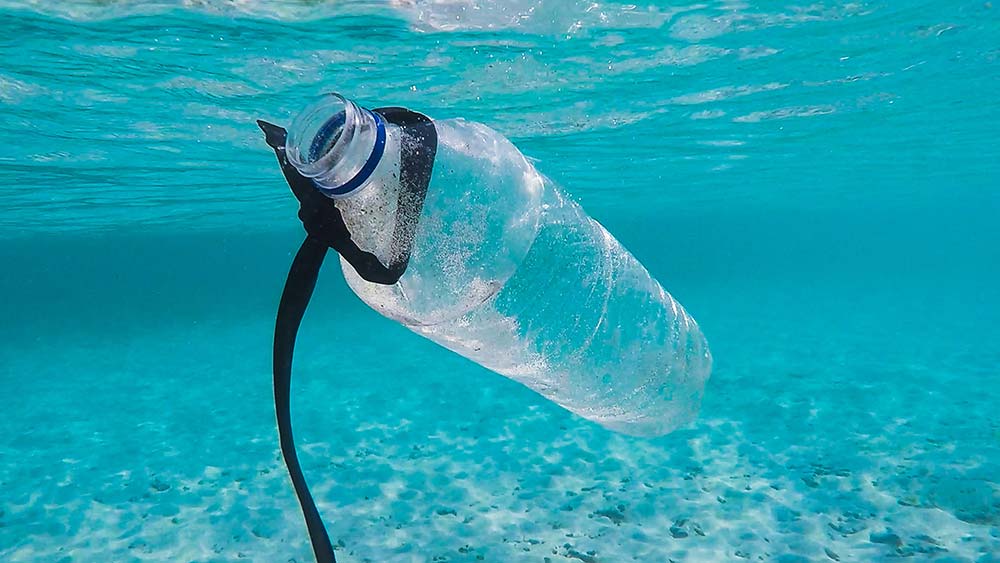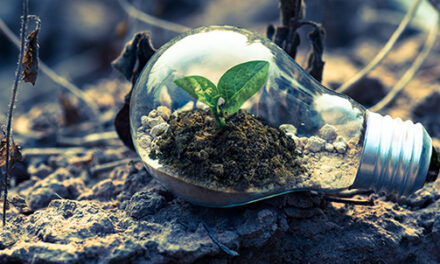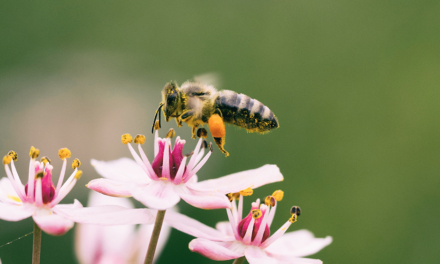Plastic bottles have been linked to cancer and other health problems. But are all plastic containers the same and are they all potential health hazards? Glass is rarely used for most personal care, skin care or cosmetic products. On the other hand, plastic is everywhere in products we use daily, including food, cleaning products, even care of newborn babies. In today’s market a symbol and number on the bottom identify most plastic containers. This information is important and tells you what type of plastic is used, if it’s recyclable, and if it is safe or not.
Certain ingredients can affect the plastic they are contained in and some plastics can leach chemicals into the products they contain. If you have sensitive skin, it’s very important to know what ingredients are in your skin care, personal care and makeup products. Make it also a habit to check the tubes and bottles you buy that contain your food and sensitive skin care and personal care products. This article will help you learn the difference between those numbers under the plastic containers.
PLASTICS THAT ARE SAFE
#1 PETE or PET—Polyethylene terephthalate (PET) absorb odors and flavors from foods that are stored in them. It is a strong, durable plastic that is clear. This type of plastic is the safest as long as it’s not exposed to heat, such as left in the sun, or reused. When reused, exposed to heat or left in the sun, this type of plastic can leach the chemical phthalate. Phthalates have been linked to liver damage, reproductive system damage, are toxic to developing fetus, and other health problems. As long as not exposed to heat, they are safe, and easily recycled for a variety of products.
USES: Soft drinks, beer, water, juice, ketchup, salad dressing, food jars for peanut butter, jelly, pickles, ovenproof plastic film and microwavable food trays.
#2 HDPE—High-density polyethylene is translucent, clear and stiff. Foods that spoil easily do well with HDPE plastic. This plastic type is considered as generally safe and it is not known to transmit any chemicals to foods or drinks. It is recycled for a variety of products. Recycled HDPE is used to make plastic crates, plastic lumber, fencing and more.
USES: Plastic milk bottles, water, juice, cosmetics, shampoo, dish and laundry detergents, bags for groceries and retail, cereal box liners.
#4 LDPE—Low-density polyethylene is a very safe and healthy plastic used for squeezable tubes, bottles and other uses. Not known to leach any harmful chemicals. Not as widely recycled as #1 and #2. Recycled LDPE is used to make garbage cans, lumber, furniture and more.
USES: Frozen foods, fresh produce, shrink wrap, cold beverage cups, squeeze tubes and bottles.
#5 PP—Commonly known as Styrofoam, Polypropylene is used for deli soup containers, yogurt containers, drinking straws, baby diapers, Rubbermaid™ containers, some plastic baby bottles, hot liquids, ketchup bottles and other cloudy plastic bottles. Commonly not recycled, but in some areas it is accepted and recycled. Recycled PP is used to make rakes, battery cables and other products.
USES: Yogurt containers, margarine, takeout meals, medicine bottles, bottle caps, ketchup and syrup.
UNSAFE TYPES OF PLASTICS
#3 V or PVC—Vinyl/polyvinyl chloride is used for pipes and tiles, Appalachian Mountain spring water, and some plastic squeeze bottles. This type of plastic is flexible, and works well with food or drink that expand or contract. May leach hormone-disrupting chemicals di-2-ethylhexyl phthalate (DEHP). It is not recyclable. This type of plastic is not safe when in contact with food. USES: Bags for bedding, window frames, carpet backing, flooring, blister packs.
#6 PS—Polystyrene is used for most opaque plastic cutlery, plastic plates, cups, Styrofoam and meat packaging. May leach styrene, which may cause cancer. Not recyclable.
USES: Cups, plates, bowls, cutlery, meat trays.
#7 OTHER—Polycarbonate contains bisphenol-A (BPA) and is used mostly for plastic baby bottles, five gallon water jugs, teething rings, pacifiers, re-usable sports bottles, clear “sippy” cups, some clear plastic cutlery, and inner lining of food cans. BPA has been linked to human breast cancer cell growth, since it mimics estrogen. Not recyclable.
USES: Larger water bottles, some citrus juice, oven-baking bags, ketchup bottles.
Toothpaste Tubes with Aluminum
Many toothpaste tubes are lined with aluminum. This type of tube (called laminate) is recyclable, however, if the tube is left in the sun or warm temperature, the aluminum may leach into the paste. They also may have trace amounts of BPA. Also, if the tube cracks or splits, the aluminum and BPA could leach into the paste. For years Tom’s of Maine has used 100 percent aluminum tubes and maintained that it was safe. However, since 2011, they have slowly been changing to plastic tubes.
The FDA has strict standards for the type of container that can be used for fluoride toothpaste. Toothpaste with fluoride is still contained in aluminum- lined tubes for many brands.
Recent reports show positive benefits of xylitol for tooth decay prevention, which does not require the aluminum-lined tube.
General Considerations
Never reuse a plastic bottle as a food or drink container if it didn’t originally contain food or drink.
Many brands use tube manufacturers in China, where quality control is not met as strictly as with U.S. manufacturers. Cleure is one brand that utilizes tubes that are made in the USA and are safe and recyclable.











